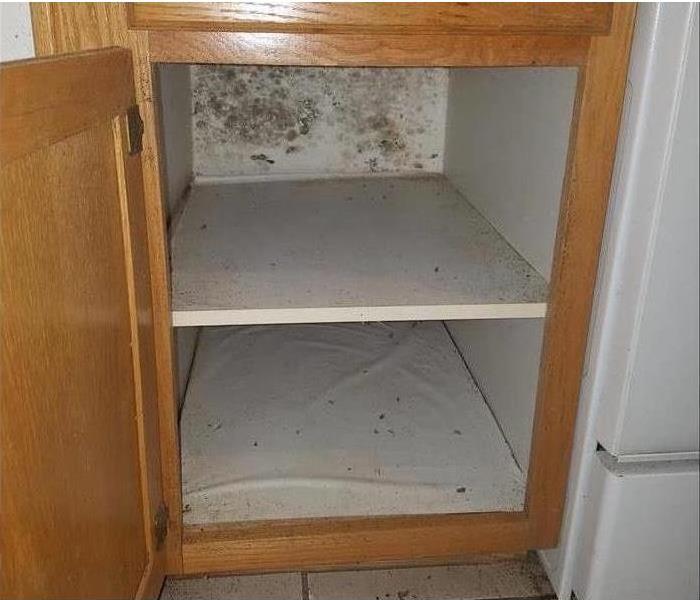4 Common Places To Find Mold Growth in Your Home
8/25/2022 (Permalink)
Four Places You Might Find Mold
Mold damage is pretty common with homes, especially ones with humidity or moisture issues. Fungal spores thrive on dampness and organic matter such as paper, carpet, and wood; therefore, they are likely to grow where these factors are present. To catch issues early, homeowners in Big Bear, CA, should keep a vigilant eye on the following four places.
1. The Bathroom
Mold and mildew growth are often noticed within the bathrooms, especially within the shower. Moisture is often in excess here and resides on the tile. While the ceramic or porcelain may be harder to penetrate, the grout itself is vulnerable to droplets. Residents are likely to see growth within the lines.
Fight it off by using a squeegee after you shower. Also, run the fans for at least 20 minutes after, pulling out as much wetness as possible. Recaulk often to avoid weaknesses in the grout lines.
2. The Closets and Cabinets
Mold damage may happen in the corners of closets or inside cabinets. These locations may have water exposure from pipes and remain dark often: a perfect habitat for the organism. If discoloration is noticed, call a mold remediation company to evaluate the trouble. The area should be inspected, and the impacted drywall torn out and replaced.
Combat trouble by keeping closets cool, running fans in the bathrooms, and using moisture-absorbent products in cabinets.
3. The Kitchen
When the oven is going, heat builds. This environment assists in building humidity and mold growth. Keep the oven fans going and run the air handler. Be aware of how much you're running appliances and check the plumbing for rust, leaks, and corrosion.
4. The Air Handler
The air conditioner is a protective device against mold, assisting in maintaining a cool, dry space. It also moves the air from room to room and takes on dampness. Mold can multiply within the pipes, spreading to other locations. Have the system cleaned and checked regularly.
Mold damage likes hiding in places you don't often look. Those tiny spores cling easily, reproducing where water and organic structure meet. Be proactive, and keep a lookout for early stages.






 24/7 Emergency Service
24/7 Emergency Service
